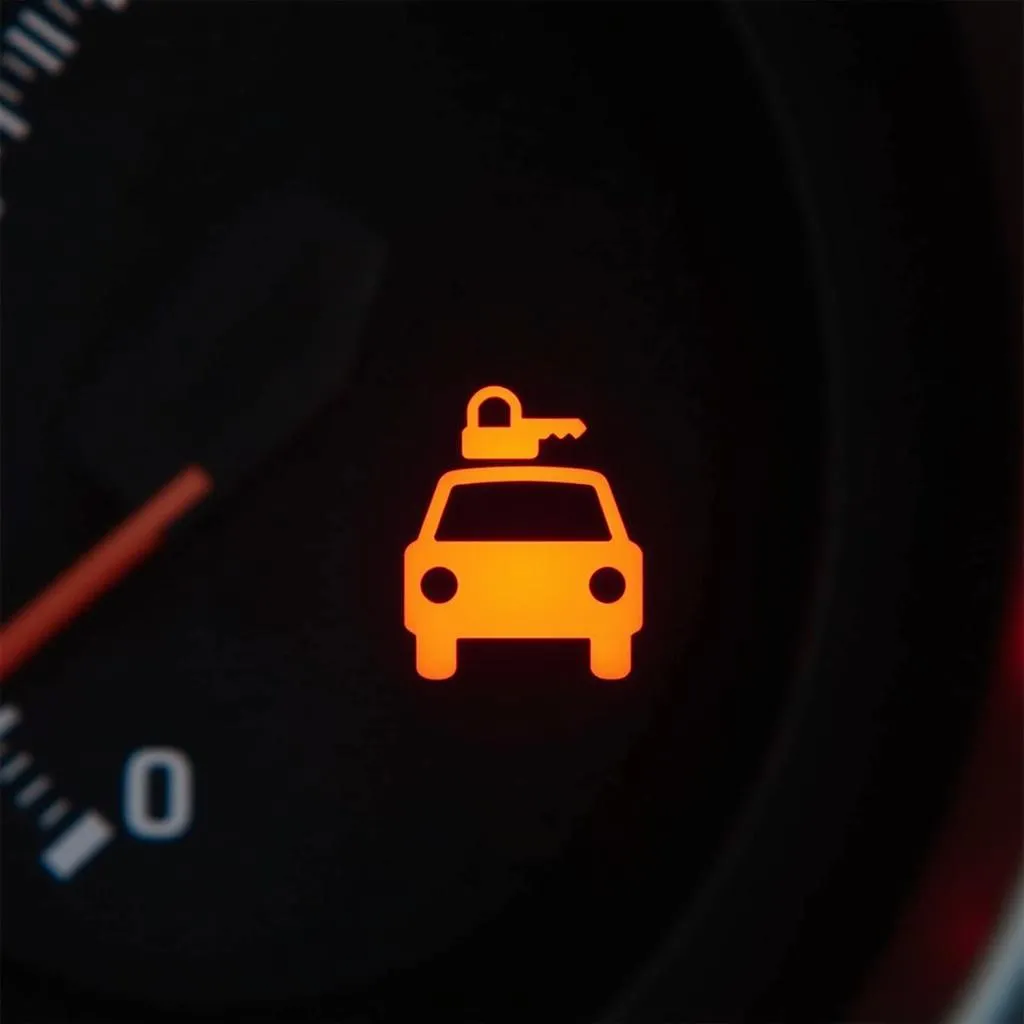The appearance of a glowing brakes warning light on your dashboard is a clear signal that something needs attention within your braking system. While it might trigger some initial worry, understanding the common causes and solutions can help you address the issue effectively and safely get back on the road.
Deciphering the Warning Light: What’s Your Car Trying to Tell You?
The brakes warning light, often depicted as a bright red circle with the word “BRAKE” or an exclamation mark inside, can illuminate for several reasons. It’s crucial to remember that this light isn’t just about worn brake pads. Let’s break down some common scenarios:
- Low Brake Fluid: One of the most frequent culprits is low brake fluid, indicating a potential leak in the braking system.
- Engaged Parking Brake: Sometimes, the simplest answer is the right one. The warning light might be on simply because you’ve forgotten to disengage the parking brake fully.
- ABS Issue: A malfunctioning Anti-lock Braking System (ABS) can also trigger the warning light.
- Brake Pad Wear: Modern vehicles often have sensors that monitor brake pad wear. When the pads wear down to a certain level, the sensor triggers the warning light.
- Other Brake System Malfunctions: Issues with the master cylinder, brake lines, or other components can also activate the warning light.
Taking Action: Steps to Take When Your Brakes Warning Light Turns On
- Don’t Panic, but Don’t Ignore: While a glowing brakes warning light shouldn’t cause immediate alarm, it’s crucial not to ignore it. Continuing to drive with a compromised braking system can be incredibly dangerous.
- Check Your Parking Brake: Start with the easiest solution. Ensure your parking brake is fully disengaged. If the light remains on, move to the next step.
- Inspect Your Brake Fluid: With the engine off and the vehicle parked on a level surface, carefully check your brake fluid reservoir. If the fluid level is low or empty, there’s likely a leak that needs immediate professional attention.
- Assess Your Braking Performance: Pay close attention to how your brakes feel. Are they spongy, slow to respond, or making unusual noises? Any irregularities should be addressed by a mechanic promptly.
- Seek Professional Diagnosis: If the parking brake and brake fluid levels seem fine, and you notice unusual braking behavior, it’s time to consult a professional.
Remote Diagnostics and Software Solutions: The Future of Car Repair
In today’s technologically advanced world, remote diagnostics and software solutions are revolutionizing the car repair industry. Expert technicians can now remotely access your vehicle’s computer system to identify the root cause of the brakes warning light, often eliminating the need for an immediate physical visit.
“Remote diagnostics can pinpoint issues with remarkable accuracy,” explains John Miller, a seasoned automotive electrical engineer specializing in remote diagnostics. “We can access sensor data, analyze error codes, and even reprogram certain modules – all without the car physically present in the shop.”
what does anti-lock brakes warning light mean can be quickly identified and resolved using these advanced methods. Whether it’s a faulty ABS sensor or a software glitch, remote diagnostics provide a swift and efficient solution.
This technology is particularly beneficial for issues like a 2008 ford econoline e350 brakes warning light, where accessing and diagnosing the traditional braking system might be time-consuming.
Preventing Future Issues: Brake System Maintenance Tips
- Regular Inspections: Adhere to your vehicle manufacturer’s recommended maintenance schedule for brake inspections.
- Brake Fluid Flush: Brake fluid should be flushed and replaced according to your vehicle’s maintenance schedule. This helps maintain optimal braking performance and prevents internal corrosion.
- Mindful Driving Habits: Aggressive driving habits, like hard braking and accelerating, can put excessive strain on your brakes, leading to premature wear.
Conclusion: Addressing the Brakes Warning Light with Confidence
A glowing brakes warning light should never be taken lightly. By understanding the potential causes, taking appropriate action, and embracing technological advancements like remote diagnostics, you can address brake issues confidently and ensure your safety on the road.
FAQs about Brakes Warning Lights
1. Can I drive my car with the brakes warning light on?
It’s highly discouraged. Driving with a potentially compromised braking system puts you and other drivers at risk.
2. How much does it cost to fix a brakes warning light issue?
The cost varies depending on the underlying cause. A simple brake fluid top-up is inexpensive, while a major brake system repair can be costly.
3. How often should I get my brakes checked?
Refer to your vehicle manufacturer’s recommended maintenance schedule. As a general rule, having your brakes inspected at least once a year is advisable.
4. Can a faulty ABS sensor cause the brakes warning light to come on?
Yes, a malfunctioning ABS sensor can trigger the brakes warning light.
5. Can I check and add brake fluid myself?
If you’re comfortable with basic car maintenance, you can check the brake fluid level. However, if the fluid is low, it’s crucial to have a professional diagnose the cause of the leak.
service brakes 2012 ford mustang warning messages and other vehicle-specific alerts are often addressed through remote diagnostics. This technology allows technicians to access and analyze the car’s computer system remotely, providing efficient solutions for modern braking systems.


